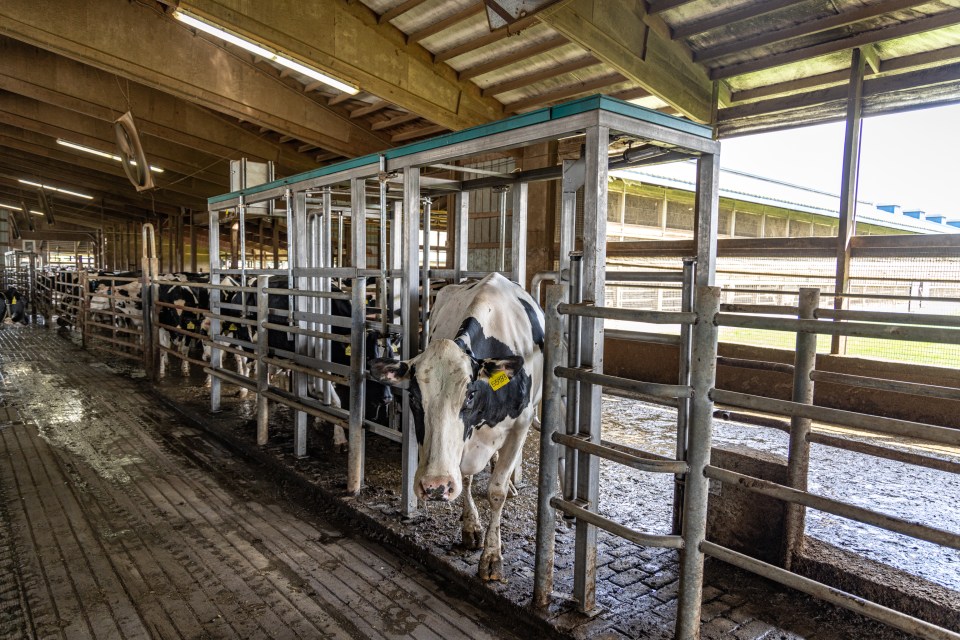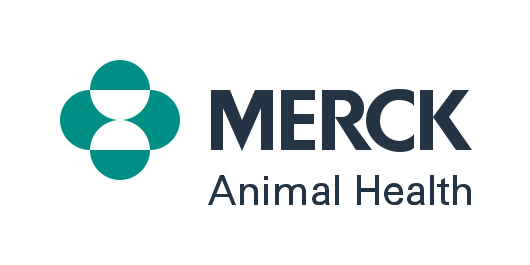How to get the most from sorting gates to optimize labor and cow flow
By Evan Platte
Originally published by Dairy Business on April 4, 2025.
Sorting gates are an increasingly popular solution to automate the process of separating cows for breeding, dry-off, hoof trimming, preg checks and other health interventions. When designed properly, sorting gate technology makes it easy for workers to care for individual cows while using labor more efficiently.
How sorting gates work
Think of sorting gates as a touch-free way to separate cows for management. Synched with electronic cow monitoring and identification systems, sorting gates automatically divert cows into separate pens as they move through milking parlor exit lanes. Workers can then more easily find and care for a subset of animals that need attention. The rest of the cows can return to their “home” pens to eat, drink and rest with minimal human interference — exactly what cows like to do — making them more content and productive.

Sorting gates eliminate the need to secure an entire pen in headlocks when only a small percentage of cows need attention. That has huge benefits for cows as well as people. Research shows that cows that spend excessive time in headlocks (more than four hours) are at risk for higher stress, lower reproduction, greater lameness and reduced milk production.1 And, searching for cows to treat takes a tremendous amount of time and adds potential frustration for workers, not to mention added risk of human or animal injury.
Secrets to successful sorting gates
Whether incorporating sorting gates into a new facility or retrofitting an existing parlor and barn, pre-planning is essential. Rely on an experienced supplier to help you think through your needs and design a sorting gate system that’s customized to your dairy. Keep these six considerations in mind when evaluating sorting gate options:
- Number of sorts/number of sort pens. Think about the multiple purposes for sorting cows — pregnancy checks, vaccinations, dry-offs, health evaluations, etc. You may want to sort cows from the same return lane into different pens based on different management needs. This is especially important for larger herds that might sort out hundreds of cows in a single shift. Diverting that many sorted cows into the same pen would defeat the purpose of the system. Choose sorting gate technology that allows for multiple sorting options, not just one or two “cuts” per shift. It may be beneficial to allow for different sorting stages. Think of it as a decision tree — for example, having the ability to sort cows first into a palpation rail for a pregnancy check, and then into another pen for vaccinations.
- Size of sort pens. Going hand in hand with the number of sort pens is the size of pens. In my years of experience, I’ve never heard a dairy owner say: “My sorting pens are too big.” When designing sorting pens, consider the capacity of your operation as well as potential expansion needs. Ensure the pen size is adequate for both current and future cow numbers. Also think about your management schedule — for example, dry-offs on Mondays — to ensure you have enough pen capacity for the number of cows to be handled each day.
- Cow flow. This can be a pain point if sorting gate systems are not designed properly. It’s critical to match your sorting gate capacity with the milking parlor flow rate. For example, if your milking parlor can handle 1,000 cows per hour, make sure your sorting gates have a high-flow capability to prevent bottlenecks in the parlor return lanes. Strive for a system that allows cows to be sorted, processed and returned to their home pen by the time the rest of the pen is finished with milking.
- Identification accuracy. Sorting gate systems generally rely on either radio frequency identification (RFID) or infrared reading technology. Regardless of the identification technology, you should expect 98% accuracy. In other words, there should be very few cows missed as well as very few cows sorted unnecessarily. The system should be at least as accurate, and most likely better, than manual sorting by a human.
- Electronic interference. With the proliferation of technology on many dairy farms, there is potential for high-frequency electronic “noise” to interfere with animal identification and sorting gate operation. Ask your milking equipment supplier or sorting gate supplier to do a noise evaluation. If interference is a concern, opt for infrared reading technology, which is not affected by high frequency noise. Or in some cases, shields may be installed to prevent interference.
- Hardware and software interface. Whether your sorting gates need to integrate with new or existing software, make sure the system is easy to automate with minimal manual intervention needed.
Involve your team
It’s important to keep in mind the “people” benefits of sorting gates, not just the benefits for cows. By automating the cow sorting process, workers experience less frustration and greater job satisfaction. They can spend time on more fulfilling tasks that bring greater value to themselves and to the dairy. Although handling livestock will never be 100% frustration-free, sorting gates create a calmer and less stressful environment for cows as well as workers.
That’s why it’s important to gain input from multiple people representing different functions on the dairy during the sorting gate design process. The best ideas often come from those who work with the cows every day. They may see hazards or bottlenecks that aren’t readily apparent — such as a setup that requires workers to cross parlor return lanes.
Don’t forget to include artificial insemination (AI) technicians, veterinarians and hoof trimmers in the planning process. Properly designed sorting gates can streamline their work and make their lives easier. Overall, sorting gates should meet the needs of both cows and humans. Don’t sacrifice one for the other. Often, multiple design revisions are needed to get the system right before final installation.
Finally, sorting gates present tremendous opportunities to optimize labor while “letting cows be cows” and providing the best possible care for every cow. To maximize these opportunities, it’s critical to take adequate time to research the options. Visit other farms to learn what other dairy producers like and don’t like about their sorting gate systems. Spending time up front will help ensure your final sorting gate design is the best fit for your team, cows and operation — now and in the future.
References
- Papinchak, L., Paudyal, S., Pineiro, J. Effects of prolonged lock-up time on milk production and health of dairy cattle. Veterinary Quarterly. 2022.42(1), 175-182. https://doi.org/10.1080/01652176.2022.2119622.
Find more content for your dairy operation.
About the author

Evan Platte
Senior Application Specialist,
Merck Animal Health
